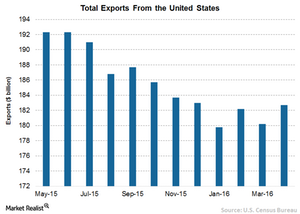How to Navigate Uneven Economic Growth
A number of factors have contributed to the slowdown, including soft overseas growth and a sharp drop in capital spending by energy and mining companies.
June 21 2016, Published 12:45 p.m. ET

How can investors navigate through this murky picture? Here are three guidelines:
Watch the dollar
U.S. manufacturing has been decelerating for most of the past two years. A number of factors have contributed to the slowdown, including soft overseas growth and a sharp drop in capital spending by energy and mining companies.
But a strong dollar also bears much of the blame. Over the past five years, the level of the dollar index has explained roughly 30% of the variation in the rate of growth in industrial production. The silver lining of this month’s weak payroll number is a greater likelihood that the Federal Reserve will hold off on raising interest rates, which could lead to a softer dollar. That, in turn, should help alleviate the pressure on the manufacturing sector, as well as corporate profits.
Market Realist – A strong dollar affected US manufacturing growth
US manufacturing (IYJ), which comprises around 12.1% of the country’s GDP, has been falling for the past few years due to weak global demand, a huge decline in investment by energy and mining companies because of a fall in commodity (GSG) prices, corporate efforts to reduce excess inventory, and loss of global competition due to a strong dollar.
According to the United Nations, China (FXI) overtook the United States (IVV) to become the biggest manufacturing country in 2010. China’s manufacturing value added stood at $2.9 trillion in 2014, compared to $2.1 trillion for the United States. China’s rise as a manufacturing hub was partially due to currency weakness.
In the last two years, the US dollar index has jumped 18% to 94.2. A strong dollar has hurt demand for US-made goods in global markets since they became more expensive for international buyers than products from countries with weaker currencies. A strong dollar also makes imports into the United States cheaper.
The disappointing payroll numbers indicate continued sluggishness in manufacturing and construction (ITB) employment, which lost 10,000 and 15,000 jobs, respectively, in May. The sharp dip in payroll numbers could prompt the Federal Reserve to delay a rate hike.
